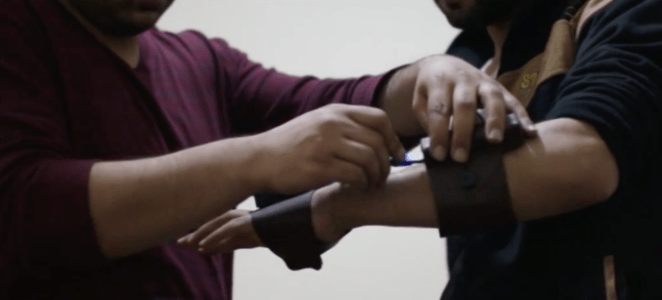Asem Hasna, 22, was a mathematics student who volunteered as a paramedic in 2013, where he lost his leg as Bashar al-Assad’s military powers assaulted a residential community southwest of Damascus. He had to be taken in a truck, among other harmed casualties, to get medical treatment at various hospitals facilities, while being attacked, bullet were fired against him through overhead.
“The explosion was so loud that I didn’t even realise that my leg was no longer there. It all happened so quickly” Hasna told.

He was unconscious most of the time as his detached limb drained severely and his hospital colleagues somehow managed to send him along with 13 other fighters to Jordan for medical treatment. His colleagues put him in a truck where he had to evade shots and checkpoints in the dead of night, Hasna hardly survived.
“There was no water or food. We just wanted to get to Amman. Two of our friends unfortunately died on the way as their injuries were so severe”.
After unbelievably making it over the outskirt, he was moved around from hospital to hospital and he went through five major operations on his amputated leg.
Amid his recovery process he was a part of a joint State Department and Red Cross program which was focused on preparing Syrians to be prosthetic professionals to build new limbs for other war survivors. There he saw a 3D printer for the first time and he was hooked.
“It was weird. I knew how a 2D printer worked but I wanted to find out more about 3D printers and learnt voraciously on the web using open source software” Hasna pointed out. “You just have to practice and use your own hands”.
He started working with a 3D printing startup in Amman called 3D MENA and learnt how to program a microchip in three days mastering the technology of bionic prosthetic using Arduino.

Hasna also printed a durable rubber part between the ankle and his heel that helped stabilize his prosthetic leg all for just $2.
“There’s practical applications using 3D printers for low cost solutions” he added.
With the achievement he found in Jordan’s startup community, Hasna also was confronting hardships after two years living in Amman as authorities began taking action against Syrians working in the heavily stretched nation that has hosted more than 1 million refuge seekers.

He traveled to Istanbul then rode down to Izmir, found a dealer, paid over $1000 each and set out at nightfall on a stuffed inflatable small boat to the island of Lesbos in Greece.
He made his way along with his other disabled friends from Greece to Macedonia then Croatia, Hungary, Austria and finally Germany within a week, all on prosthetic leg.
As he stayed for his German residency papers to be ready, Hasna holds programming sessions for children in the camp where he now lives in Berlin utilizing Arduino and conferring some of his recently learned knowledge of digital fabrication in prosthesis.
“My world opened up with open source technology . It changed my life for the better and I want to pass that on to the next generation” he said.
Source: techcrunch.com